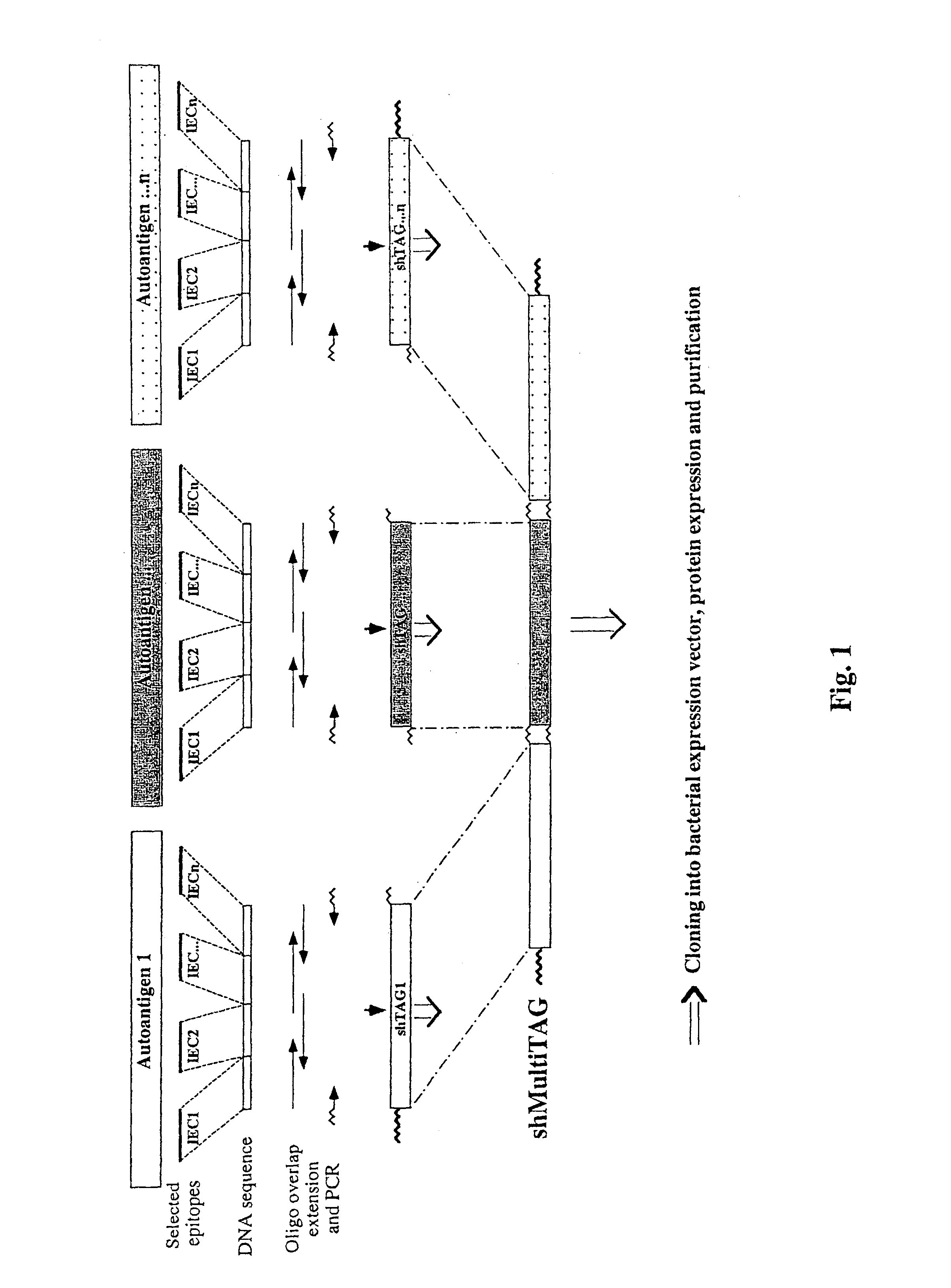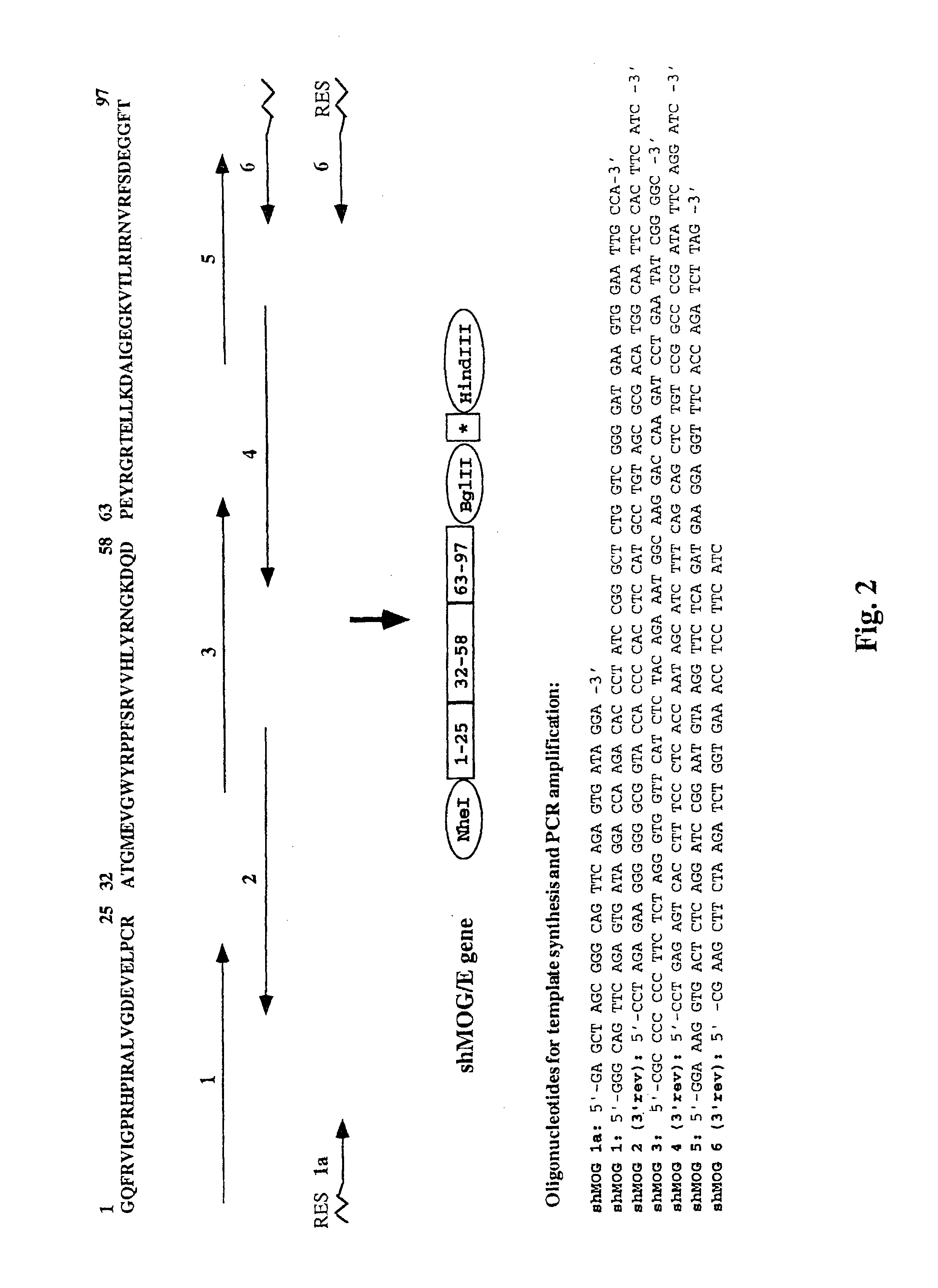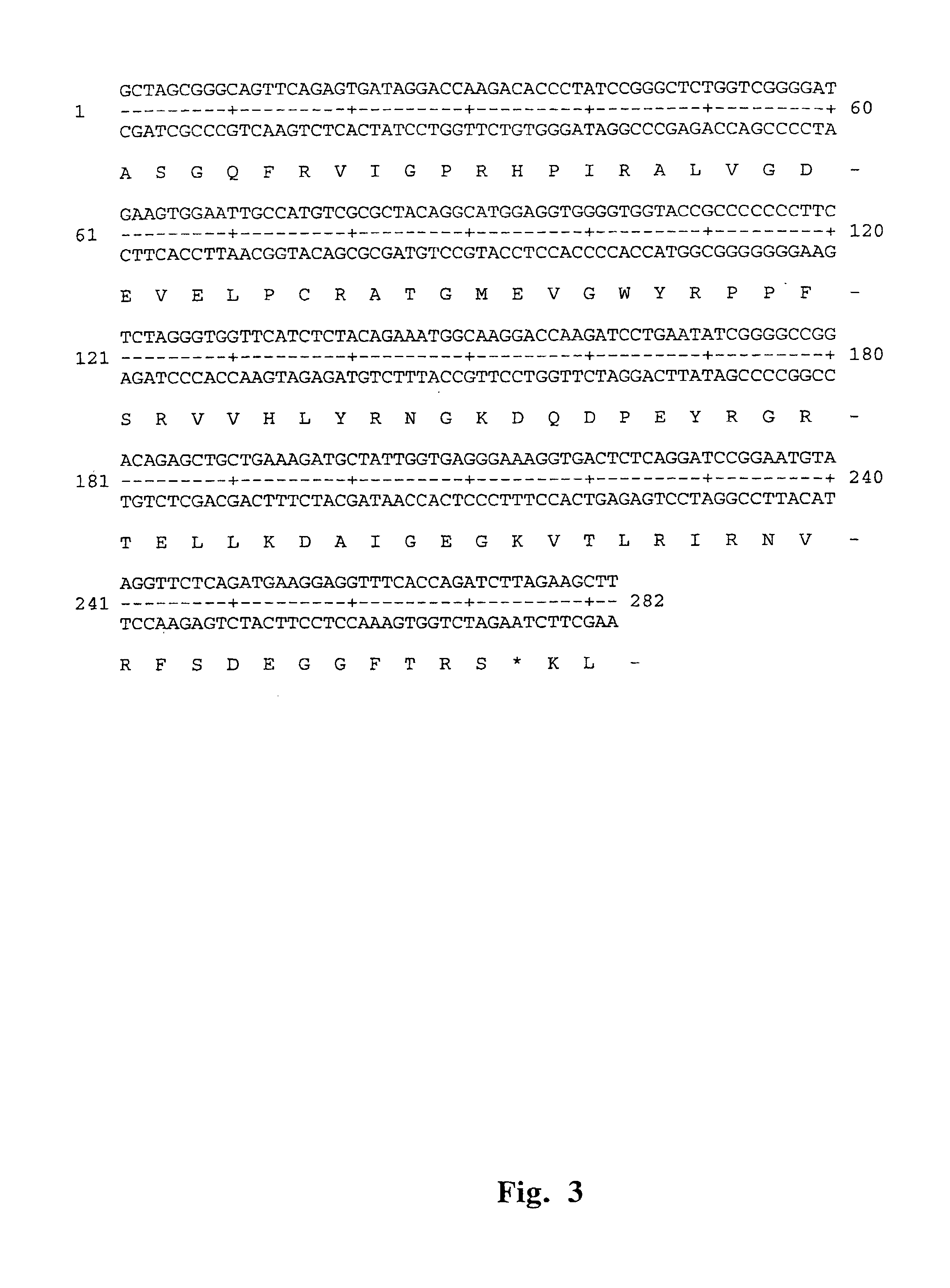Synthetic human genes and polypeptides and their use in the treatment of autoimmune diseases
- Summary
- Abstract
- Description
- Claims
- Application Information
AI Technical Summary
Benefits of technology
Problems solved by technology
Method used
Image
Examples
example 1
General Method for Construction of The Synthetic Genes
[0225]FIG. 1 shows a general scheme for the preparation of a shMultiTAG for a given autoimmune disease. For each target autoantigen, once the disease-relevant epitopes have been identified, the DNA sequences encoding the different IECs selected to compose the shTAG are organized in tandem and examined for potential problems at the DNA or expressed protein levels. When necessary, modifications of the DNA sequences include alterations not resulting in amino acid changes, to neutralize possibly problematic endonuclease restriction sites, to minimize formation of DNA secondary structures or to “bacterize” codons, as well as alterations leading to cysteine to serine substitution in order to increase the solubility of the expressed protein.
[0226]To prepare the shTAG, DNA sequences corresponding to endonuclease restriction sites are also added to facilitate cloning or, if needed, to enable construction of shMultiTAG with preferred IECs....
example 2
Construction of Pilot shTAGs and shMultiTAGs for MS
[0228]The shMultiTAGs related to MS are designated Y-MSP genes coding for MS-related Proteins (Y-MSP). The Y-MSPa gene was constructed by sequentially ligating the following shTAGs: shMOG / E, shMBP / E and shPLP / E genes. Following our finding that MOBP may also be a highly relevant target antigen for MS, Y-MSPb gene was then constructed in which shMOBP / E gene was ligated to the Y-MSPa gene.
2.1. Construction of the shMOG / E Gene (FIG. 2)
[0229]Studies from our laboratory (Kerlero de Rosbo et al., 1997) have indicated that the autoimmune reactivity against MOG by MS PBLs is predominantly directed against three epitope clusters located within amino acids 1-22, 34-56, and 64-96 of the human MOG molecule. The shMOG / E gene was designed to encode a polypeptide comprising the amino acids encompassed by these regions of MOG, in tandem. Thus, 60-70 nucleotide-long oligonucleotides representing codons of the amino acid residues in these regions of ...
example 3
Purification and Refolding of the Synthetic Gene Products
[0236]For each of the pRSET / shMOG / E, pRSET / shMBP / E, pRSET / shPLP / E, pRSET / shMOBP / E, pRSET / Y-MSPa or pRSET / Y-MSPb E. coli transformants, a colony exhibiting the highest level of expression of the relevant recombinant protein was selected for large-scale induction of protein expression and preparation of inclusion bodies. The expressed protein was purified under denaturing conditions (8 M urea) by metal chelate chromatography, as per the manufacturer's instructions. Fractions containing purified protein, as evidenced by SDS-PAGE, were pooled and subjected to reducing conditions with—mercaptoethanol. The protein was then diluted to 50-100 g / ml in 8 M urea and allowed to refold by dialysis against gradually decreasing concentrations of urea (8 M to 0 M). Aggregated protein was removed by centrifugation and the soluble protein was lyophilized after estimating the protein concentration by Bradford reaction. Samples were analyzed by S...
PUM
| Property | Measurement | Unit |
|---|---|---|
| Composition | aaaaa | aaaaa |
| Solubility (mass) | aaaaa | aaaaa |
Abstract
Description
Claims
Application Information
 Login to View More
Login to View More - R&D
- Intellectual Property
- Life Sciences
- Materials
- Tech Scout
- Unparalleled Data Quality
- Higher Quality Content
- 60% Fewer Hallucinations
Browse by: Latest US Patents, China's latest patents, Technical Efficacy Thesaurus, Application Domain, Technology Topic, Popular Technical Reports.
© 2025 PatSnap. All rights reserved.Legal|Privacy policy|Modern Slavery Act Transparency Statement|Sitemap|About US| Contact US: help@patsnap.com



